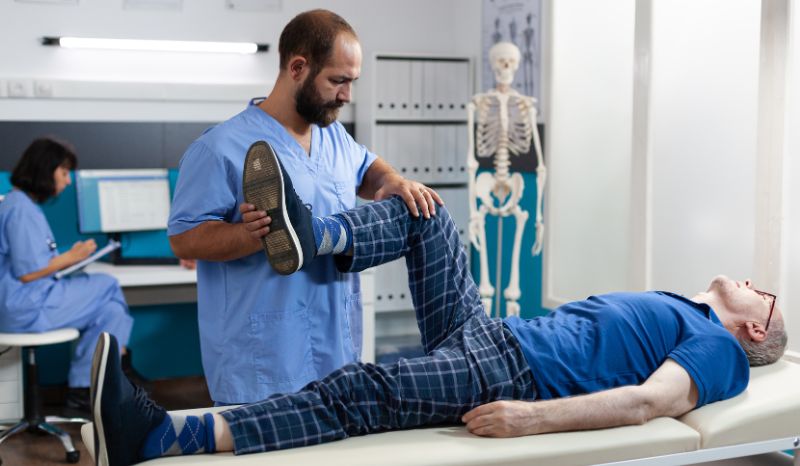
Allied health assistants (AHAs) are vital to providing well-rounded healthcare, supporting professionals like physiotherapists, occupational therapists, and dietitians. Their uniforms, which vary based on their specific duties, workplace policies, and healthcare standards, are designed to reflect professionalism and their work’s practical demands. This article explores the numerous characteristics of being an AHA, including their dress and responsibilities.
What Is The Difference Between A Nurse And An Allied Health Assistant?
Nurses and AHAs are essential in healthcare, but they help in different ways. Nurses work directly with patients, giving medications, checking vital signs, and keeping records. They’re the main point of contact for patients.
On the other hand, AHAs work with therapists to help patients recover. They assist with therapy programs, prepare materials, and help patients with daily tasks that aid their recovery. They focus more on therapy than direct medical care.
How Long Does It Take To Become An Allied Health Assistant?
A year is usually enough time to become an allied health assistant. AHAs get a Certificate III or IV in Allied Health Assistance, which equips them with the fundamental knowledge and real-world abilities needed for the position. Depending on your study schedule, these programs usually take six to twelve months to finish.
For those who want to progress, further physiotherapy or occupational therapy certifications can offer specialization and career advancement.
What Makes A Good Allied Health Assistant?

Being a good allied health assistant demands a combination of technical skills and interpersonal abilities coupled with a strong work ethic. Key attributes include:
- Empathy and Compassion: Patients who are recovering from injuries, illnesses, or surgeries are often under the care of AHAs. Thus, a kind and supporting attitude is a must.
- Strong Communication: Essential for effective therapy implementation between patients and professionals.
- Adaptability: Essential for working in diverse settings like hospitals and community clinics.
- Attention to Detail: Therapy programs must be adhered to appropriately, and progress regarding patients should be documented accordingly.
- Teamwork: Allied health assistants usually work with various other health care providers, so teamwork becomes a fundamental requirement for their job.
What Does An Allied Health Assistant Do?
Allied health assistants do many different things to help provide healthcare. Some of their tasks include:
- Helping patients with exercises and other therapy activities as directed by therapists.
- They set up and maintain therapy equipment.
- Prepare materials or resources for the therapy sessions.
- Monitor patients’ progress and report to the professional supervising them.
- General support to the rehabilitation program ensures they feel at ease and lively.
They are instrumental in creating a seamless care experience by facilitating communication between patients and therapists.
What Award Are Allied Health Assistants Under?
Allied health assistants in Australia are usually covered by the Health Professionals and Support Services Award. This award determines the wages, conditions, and entitlements for healthcare support staff. It guarantees that AHAs are paid adequately and treated appropriately for their hard work in the healthcare sector.
It might differ slightly, depending upon the employer and his state regulations, but it generally provides a comprehensive framework to the AHAs working in the public as well as private sectors.
Who Wears White Uniform In Hospital?

White uniform in hospitals is often associated with professionals who hold positions of authority or cleanliness. Historically, doctors were the primary wearers of white uniforms to symbolize purity and professionalism. In modern healthcare settings, the use of white uniforms varies but is often adopted by nurses, senior medical staff, or administrative roles in some institutions.
Conclusion
While allied health assistants generally wear uniforms that are different from other healthcare professionals, such as scrubs or polo shirts with the facility’s logo, practicality and hygiene remain the focus. They choose the uniform to ensure it is easily identifiable while fulfilling the functional needs of their role.
Choosing the right uniform is vital for allied health and administrative staff members, ensuring comfort, professionalism, and workplace standard compliance. Be it durable scrubs, tailored polo shirts, or functional work attire, getting an appropriate outfit for every day of duty makes a world of difference at work.
For high-quality allied health and administrative staff uniforms, shop now to explore a wide range of options that combine style and practicality. If you’re managing a team or need customized solutions for your staff, don’t hesitate to request a quote and discover how easy it is to elevate your professional wardrobe today.
Originally Published on Meduniforms.com.au.


































